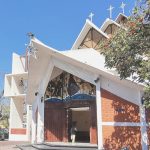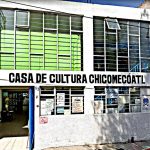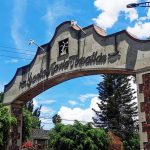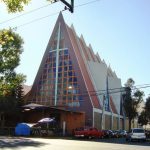San Andrés Tomatlán is an original settlement in Iztapalapa. It’s one of 15. Like few others, it’s stands to gain tremendously from the ongoing rehabilitation of the Canal Nacional. It’s already sandwiched between the canal and it’s own still-shiny Metro Station. But with considerable parkland along its entire western edge, it’s guaranteed to be more than just an arch on the Avenida Tláhuac.
Once a neighborhood of the very-old town of Culhuacan, the story of Tomatlán can’t really be told independently of the story of that town, and later the Church and Monastery. No fewer than seven of the old Barrios of Culhuacan are today Iztapalapa neighborhoods. Four more of those old barrios are in Coyoacán, again, just across the canal.
Some of what interests out-of-towners in today’s San Andrés Tomatlán is the seeming impenetrability of its winding crooked streets and walkways. Many are simply too narrow for vehicular traffic. This marks it as, not just pre-conquest neighborhood, but as one that has very ancient roots. Culhuacan itself was founded in about 600 CE. This neighborhood, between the Canal Nacional and the Tláhuac Canal (as today’s avenue was long known), would have emerged soon after, likely as chinampa artificial islands on the lake edge.
Some of that history is today being reclaimed as part of the Canal Nacional restoration. One big part lost was with the demolition in the 1970s of the old San Andrés Apóstol chapel. The replacement church, elevated to a parish in 1987, appears as the symbol on the neighborhood Metro station on Line 12.

Nearest at 0.06 kms.

Nearest at 0.08 kms.

Nearest at 0.71 kms.

A giant neighborhood market for south eastern Coapa and Cuemanco . . .

Chicomecóatl is a neighborhood center and cultural hub for communities in the shadow of the volcano.

Likely the best place for lunch in San Francisco Culhuacán...

An original settlement in Iztapalapa, this one's making a comeback...

An early 1950s architectural marvel reaches for the sky...